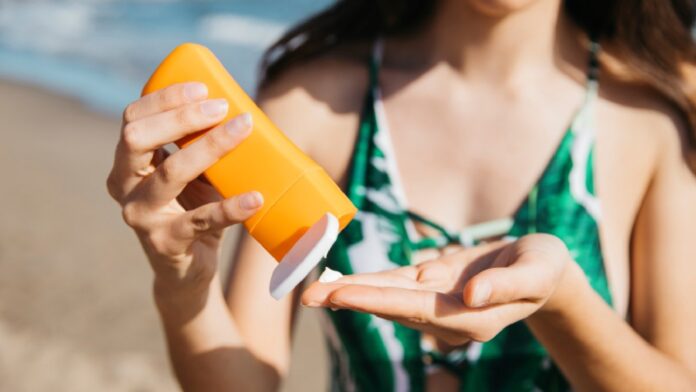Sunscreen is among the most vital merchandise to guard your pores and skin from solar injury. A dermatologist shares all about sunscreen components.
Is selecting a sunscreen on your pores and skin merely in regards to the SPF or Solar Safety Issue that it presents? Ideally, there’s much more on the product label that you need to test before you purchase a sunblock. From the kind it’s – chemical or mineral – to sunscreen components, choosing the right sunscreen goes past simply checking the SPF quantity, says a dermatologist.
“When discovering a sunscreen, the most effective factor to search for is broad spectrum filters, stability, and antioxidants to guard your pores and skin. As a dermatologist, many individuals ask me what to search for on the components label, and I all the time inform them to simply have a look at the label earlier than they buy a product. There are a number of key components and issues to search for in a sunscreen,” Dr Vidushi Jain tells Well being Pictures.
Should-have components in sunscreen
1. Zinc oxide and titanium dioxide:
These are known as mineral or bodily filters. They reside simply on the pores and skin floor, and replicate UV rays. They’re non-irritating, and mild, which make these merchandise nice for delicate pores and skin and for individuals who are all pimples inclined. “Zinc oxide and titanium don’t penetrate the pores and skin, due to this fact they’re protected for kids and pregnant girls,” says Dr Jain.
2. Avobenzone:
Avobenzone is the most typical chemical filter. It has extraordinarily excessive absorption in opposition to UVA rays which largely result in photoaging, wrinkles and pigmentation. Avobenzone oxidizes and degrades extraordinarily rapidly in daylight, so sometimes it has stabilizers corresponding to octocrylene to enhance efficacy.
3. Octocrylene:
Octocrylene has 2 functions, it absorbs UVB rays and causes sunburn and it stabilizes avobenzone to enhance efficacy. They sometimes don’t trigger any points to most individuals pores and skin, however it might generally set off allergic reactions in delicate pores and skin, so a patch check is advisable.
4. Mexoryl SX or Mexoryl XL:
Mexoryl SX and Mexoryl XL are fashionable UV filter elements present in choose skilled, European sunscreens. When used collectively, they actually do provide broad-spectrum safety, and most significantly, they’re photostable. They don’t break down upon important solar publicity. If yow will discover a sticker for Mexoryl, you may belief and rank on your sunscreen whereas spending any time open air.
5. Helioplex Know-how:
Helioplex is a proprietary expertise that stabilizes the sunscreen agent, avobenzone. Helioplex permits the sunscreen to last more on the pores and skin too. For those who see Helioplex within the packaging simply know that the sunscreen will last more due to the Helioplex.
6. Antioxidants (vitamin C, vitamin E, inexperienced tea extract):
A couple of sunscreens include additional ranges of antioxidants along with the UV filters to minimize free radical injury related to solar publicity. Antioxidants will not be a UV blocking agent however will add a layer of safety in opposition to oxidative stress to the pores and skin.
7. Hyaluronic acid:
The primary vital step is selecting a correct sunscreen. Newer formulations of sunscreens could produce other efficient components which might be good for the pores and skin, corresponding to niacinamide (greatest for redness and pigmentation), and hyaluronic acid which helps with moisture retention. “These will not be solar filters, these components could also be good on your pores and skin well being whereas rising the multifunctional nature of your sunscreen,” provides the professional.
Dr Jain provides that if you’re not sporting sufficient sunscreen and never reapplying each couple of hours, particularly if you find yourself exterior, sunscreen isn’t value it. Click on to know the way to use sunscreen accurately.


